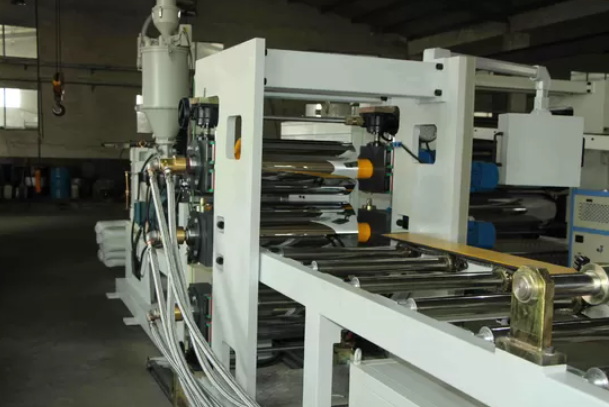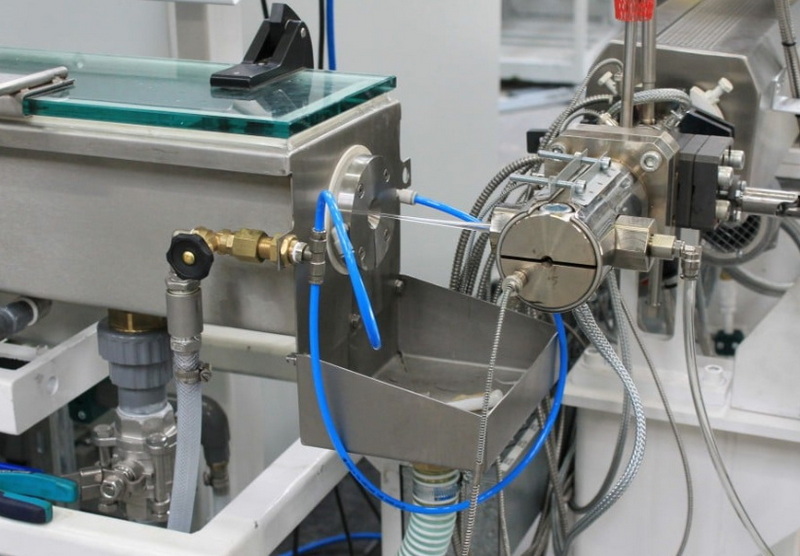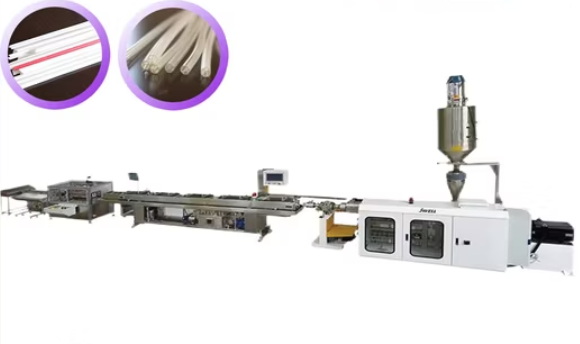Content Menu
● Introduction to Medical Tube Plastic Extrusion
>> Common Materials Used
● Key Factors in Selecting a Medical Tube Plastic Extrusion Factory
>> 1. Quality Control Measures
>> 2. Material Selection
>> 3. Customization Capabilities
>> 4. Regulatory Compliance
>> 5. Technological Innovation
● Advanced Technologies in Medical Tube Plastic Extrusion Machinery Factories
● Case Studies: Successful Implementations
● Challenges and Opportunities in the Industry
● Future Trends in Medical Tube Extrusion
● Conclusion
● FAQs
>> 1. What are the key materials used in medical tube extrusion?
>> 2. Why is quality control important in medical tubing extrusion?
>> 3. What regulations must medical tubing manufacturers comply with?
>> 4. How does customization impact medical tubing production?
>> 5. What role does advanced technology play in medical tube extrusion?
Selecting a suitable medical tube plastic extrusion factory is crucial for ensuring the quality, safety, and effectiveness of medical devices. This process involves several key factors, including quality control measures, material selection, customization capabilities, regulatory compliance, and technological innovation. In this article, we will delve into these factors and explore how they impact the production of medical tubing.

Introduction to Medical Tube Plastic Extrusion
Medical tube plastic extrusion is a process that involves melting raw materials and shaping them into precise tubes. These tubes must adhere to strict medical standards to ensure biocompatibility, durability, and performance under different conditions. The process involves feeding raw materials into an extruder, heating them, and pushing them through a die to achieve the desired shape. The resulting tubes are then cooled and cut to the required lengths.
Medical tube extrusion is widely used in various medical applications, such as intravenous (IV) tubing, catheters, surgical instruments, and drug delivery systems. The versatility of extruded tubing allows it to be adapted for different medical needs, from simple fluid transfer to complex surgical procedures.
Common Materials Used
Common materials used in medical tube extrusion include polyvinyl chloride (PVC), thermoplastic elastomers (TPE), silicone, and polyethylene. These materials are chosen for their biocompatibility and durability. PVC is widely used due to its flexibility and resistance to chemicals, while silicone offers excellent biocompatibility and can be sterilized easily.
TPE provides a balance between flexibility and resistance to chemicals, making it suitable for applications requiring both properties. Polyethylene, known for its strength and resistance to chemicals, is often used in applications where durability is critical.
Key Factors in Selecting a Medical Tube Plastic Extrusion Factory
1. Quality Control Measures
Quality control is paramount in medical tubing extrusion. It involves several stages, including raw material inspection, in-process monitoring, dimensional measurement, visual inspection, leak testing, and functional testing. Each stage ensures that the tubing meets the required specifications and standards.
Raw material inspection involves verifying the purity and consistency of the materials used. In-process monitoring checks for any deviations during production, such as temperature fluctuations or changes in material flow. Dimensional measurement ensures that the tubing meets precise dimensional standards, often within tight tolerances.
Visual inspection checks for any visible defects or irregularities, while leak testing verifies that the tubing is free from leaks and can withstand pressure. Functional testing assesses the tubing's performance under simulated conditions to ensure it meets the intended use requirements.
2. Material Selection
The manufacturer should offer a range of biocompatible materials suitable for different medical applications. The choice of material depends on the specific requirements of the device, such as flexibility, durability, and resistance to bodily fluids.
For example, silicone is often used in applications requiring high biocompatibility and sterilizability, such as implantable devices. PVC is commonly used for IV tubing due to its flexibility and resistance to chemicals.
3. Customization Capabilities
Customization is crucial for meeting unique application needs. Manufacturers like Duke Extrusion offer tailored solutions to ensure products are optimized for performance and safety. Customization can involve adjusting the tubing's dimensions, material properties, or surface finish to suit specific medical applications.
For instance, customized tubing might be required for a new surgical instrument that needs precise dimensions to fit into a specific anatomical space. The ability to customize allows manufacturers to adapt their products to emerging medical technologies and innovative procedures.
4. Regulatory Compliance
Manufacturers must comply with relevant regulations and standards, such as ISO 10993, USP Class VI, FDA 21 CFR Part 820, and EU MDR. Compliance ensures that products are safe for use and meet performance standards.
ISO 10993 provides guidelines for biological evaluation of medical devices, while USP Class VI ensures that materials are safe for use in medical applications. FDA 21 CFR Part 820 outlines quality system regulations for medical device manufacturers in the U.S., and EU MDR sets standards for medical devices in the European Union.
5. Technological Innovation
Advanced technology plays a significant role in enhancing the quality and efficiency of medical tubing extrusion. Features such as real-time monitoring systems, precision dies, and automated calibration ensure consistent product quality and reduce production variability.
Real-time monitoring systems provide immediate feedback on operational parameters, allowing operators to identify and address potential issues promptly. Precision dies ensure that the tubing meets precise dimensional standards, often within tight tolerances. Automated calibration reduces variability and improves production efficiency by maintaining consistent dimensions throughout the extrusion process.

Advanced Technologies in Medical Tube Plastic Extrusion Machinery Factories
Modern medical tube plastic extrusion machinery factories are equipped with cutting-edge technologies that improve precision, efficiency, and adaptability in production. These include:
- Real-time Monitoring Systems: These systems provide immediate feedback on operational parameters, allowing operators to identify and address potential issues promptly.
- Precision Dies: These dies ensure that the tubing meets precise dimensional standards, often within tight tolerances.
- Automated Calibration: This feature reduces variability and improves production efficiency by maintaining consistent dimensions throughout the extrusion process.
- 3D Printing Integration: Some factories integrate 3D printing technology to create complex geometries or prototypes, allowing for rapid prototyping and testing of new designs.
- Artificial Intelligence (AI) in Quality Control: AI can be used to analyze data from quality control processes, predicting potential defects and optimizing production parameters to minimize errors.
Case Studies: Successful Implementations
Several companies have successfully implemented advanced medical tubing extrusion technologies. For example, TwinScrew offers customized solutions that boost efficiency and bring value to customers. Their track record showcases their ability in assisting both well-known companies and newcomers in reaching their manufacturing objectives.
Another example is Medtronic, which has integrated advanced extrusion technologies to improve the quality and consistency of their medical devices. By leveraging real-time monitoring and precision dies, they have significantly reduced production variability and enhanced product reliability.
Challenges and Opportunities in the Industry
The medical tube extrusion industry faces several challenges, including increasing regulatory demands, the need for sustainable materials, and the pressure to innovate while maintaining cost-effectiveness. However, these challenges also present opportunities for growth and innovation.
For instance, the shift towards sustainable materials can drive innovation in biodegradable plastics or recycled materials, potentially reducing environmental impact while maintaining product performance. Additionally, advancements in technology can lead to more efficient production processes, reducing costs and improving product quality.
Future Trends in Medical Tube Extrusion
Future trends in medical tube extrusion will likely focus on advanced materials, nanotechnology, and further integration of AI in production processes. The use of nanomaterials could enhance the biocompatibility and durability of medical tubing, while AI could optimize production parameters in real-time, predicting and preventing defects.
Moreover, there will be an increased emphasis on sustainability and environmental responsibility, driving the development of eco-friendly materials and production methods that minimize waste and reduce carbon footprint.
Conclusion
Selecting a high-quality medical tube plastic extrusion machinery factory is crucial for ensuring the safety and effectiveness of medical devices. By focusing on quality control, material selection, customization capabilities, regulatory compliance, and technological innovation, manufacturers can produce tubing that meets the stringent standards required in healthcare applications.

FAQs
1. What are the key materials used in medical tube extrusion?
Common materials include PVC, TPE, silicone, and polyethylene due to their biocompatibility and durability.
2. Why is quality control important in medical tubing extrusion?
Quality control ensures that tubing meets precise specifications and standards, preventing defects that could compromise patient safety.
3. What regulations must medical tubing manufacturers comply with?
Manufacturers must comply with regulations such as ISO 10993, USP Class VI, FDA 21 CFR Part 820, and EU MDR to ensure biological safety and performance standards.
4. How does customization impact medical tubing production?
Customization allows tubing to be tailored to specific medical applications, ensuring optimal performance and safety in diverse healthcare settings.
5. What role does advanced technology play in medical tube extrusion?
Advanced technologies improve precision, efficiency, and adaptability in production, enabling real-time monitoring and predictive maintenance to enhance quality control.






















